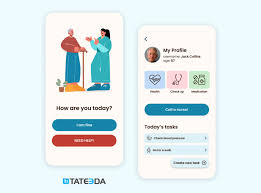Health monitoring apps have become popular among younger generations but can also serve as valuable resources for older adults. However, to be effective, these apps must be adapted to meet this demographic’s specific needs and preferences. This article explores how health monitoring apps can be designed to better support older adults in managing their health.
1. Simplifying User Interface and Navigation
Any health and wellness app must have a simple and intuitive interface to be user-friendly for older adults. Older users may not be as tech-savvy as younger individuals, so the design should focus on clarity and ease of use.
Firstly, larger buttons and readable fonts can significantly enhance the user experience. Older adults may have visual impairments, so a clear layout with contrasting colors can make the app easier to navigate.
Secondly, straightforward navigation is key. It is beneficial to have a few primary functions that are easy to access from the home screen. Reducing the number of steps needed to complete a task, such as logging a health activity or checking medication reminders, can prevent frustration.
Lastly, providing a guided tutorial upon the first use of the app can help older adults become familiar with the app’s features. Clear instructions and visual cues can make learning smoother and more enjoyable.
2. Integrating Health Monitoring Features
Health monitoring is crucial for managing the well-being of older adults. Health monitoring apps can offer valuable support by integrating features that allow users to monitor vital signs such as blood pressure, heart rate, and blood glucose levels.
These apps can sync with wearable devices or medical equipment that older adults may already use. This integration ensures that data is automatically recorded, reducing the effort needed by users to input information manually.
3. Offering Personalized and Adaptive Content
Older adults have diverse health needs that may vary widely depending on their lifestyle, medical conditions, and fitness levels. A one-size-fits-all approach does not work effectively for this demographic. Therefore, health monitoring apps should offer personalized content that can adapt to each user’s specific requirements.
For example, apps can provide tailored exercise programs based on an individual’s mobility levels or suggest dietary plans considering existing medical conditions like diabetes or hypertension. These personalized features can make the app more relevant and valuable to the user.
4. Incorporating Social and Support Features
Social interaction plays a significant role in the well-being of older adults. Health monitoring apps can tap into this by incorporating features that encourage community building and social support.
For instance, apps can include forums or chat features where users can share their experiences, ask questions, and offer support to one another. This helps build a sense of community and provides a platform for users to learn from others facing similar health challenges.
5. Ensuring Data Security and Privacy
One of the major concerns for older adults when using digital tools is the security and privacy of their personal information. Health monitoring apps must prioritize data protection to gain and maintain the trust of this demographic.
Firstly, apps should use robust encryption to protect sensitive health data from unauthorized access. Transparent privacy policies are also essential, clearly outlining what data is collected, how it is used, and who has access to it.
Albertsons says, “Make managing your health a seamless part of your routine. Schedule vaccines and health screenings, refill prescriptions, and more on the go with our digital pharmacy.”
By addressing these key areas, these apps can become powerful tools that help older adults manage their health more effectively and confidently. As the population continues to age, adapting digital tools to meet their needs will become increasingly vital for promoting overall well-being.



